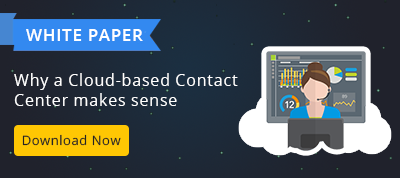Voice broadcasting technology has gained wide acceptance across most service delivery firms since the turn of the millennium. It allows a company to cost effectively reach a wide audience in a comparatively short period of time with remarkable success.
In a contact center, speed of delivery of service can make all the difference between success and failure. Since, companies today have a huge CRM or customer database, generating personalized sales pitch and delivering a strong message to each individual separately on the list is a logistical challenge. Even if auto-dialers are used, it would still take time.
Voice broadcasting allows a company to send messages to as many customers or subscribers as it wants almost simultaneously. Voice broadcasting software can manage a call database. It can also read digital messages between a company and its customers maintained in a customer database. The intelligent voice broadcasting system can send similar or personalized messages to various customers and prospects. The messages could range from a sales pitch or reminders for seasonal discounts or promotional offers to reminders and updates about renewal of subscription and cold calling new leads. There could be many more applications like conducting basic market surveys or employee surveys, opinion polls or confirmation calls to the customer about renewal or issuance of a service.
Two different voice broadcasting system is generally used to nurture leads. It could either be by sending a prerecorded message that can be played on the recipient side. The recipient can also interact by either pressing buttons on the phone keypad and being guided through a phone menu or directly speaking to a voice agent without having to place a call separately. The other could be to send bulk messages to answering machines with the expectation that the recipient calls back.
What are the key features of voice broadcasting?
- Text-to-speech: This feature allows you to personalize your messages for each recipient individually. Names and other relevant details of the customer or prospect can be inserted into the valid fields in an otherwise generic message. This can be done by importing the contacts from the call log or message list.
- Recording separate messages for different live calls or answering machines: An intelligent voice broadcasting system can be programmed to understand the difference between a live recipient and an answering machine. That means, a live person would receive one particular message while an answering machine would receive a slightly different message, like requesting the recipient to call back at an appropriate time.
- Interactive voice response: This system also allows you to feed personalized messages to an outbound IVR system which can not only play the recorded message at the destination but can also interact with the receiver of the message by recording the inputs from a DTMF keypad or by connecting them to a live agent. An IVR voice broadcasting system allows the company to collect crucial customer information and insight for further lead generation.
- Opt-out messages: Voice broadcasts come with an opt-out option in accordance with the FTC telemarketing sales rules. This is a feature that has been developed to counter the perception that voice broadcasting is an intrusive medium. It is similar to the ‘unsubscribe’ option recipients of marketing emails are given.
- Live call transfer: Voice broadcast messages also give the recipients the option to connect with a live agent in case they have queries regarding the message. This allows instantaneous lead generation and also higher chances for lead conversion.
- Scheduling control: A voice broadcast system gives you the flexibility of choosing the time when the voice blast should be disseminated, choose the duration of the total effort or even select the end time of the campaign. This means constant monitoring of the system is not required and makes the system more intuitive.
What are the advantages of a voice broadcast?
- Cost-effective: Sending voice calls separately to thousands of individuals on a customer database will be very expensive because pulse rates for voice calls are extremely high. A voice blast allows you to reach many different recipients at a very nominal cost. So, even if there is no new lead generation or conversion, the wastage of resources is negligible.
- Scalable: This feature allows you to scale up or down your marketing effort easily. There is hardly any difference in cost of a message sent to a single recipient or to multiple recipients.
- Improved productivity: Since the calls are made automatically without agent involvement, it frees up agents to focus on revenue generating projects. The same message doesn’t have to be communicated by an agent to different recipients manually. This also boosts agent morale as they can take up more challenging assignments. That automatically improves the productivity of the firm.
- On time delivery: The messages are sent to the recipients at the scheduled time. There is almost no chance of a disruption to the plan.
- Increase sales: Since messages can be targeted better, the sales conversions are higher than many other marketing efforts. Interested customers can make further inquiries almost immediately, speeding up the sales process.
A voice broadcast is a valuable tool for a contact center and it doesn’t involve large capital investments. As a result, the ROI is quite high. It is time, you start using it to scale-up your business by creating value for the customer. A voice broadcast is one such tool that will allow you to create value and drive sales quickly.


